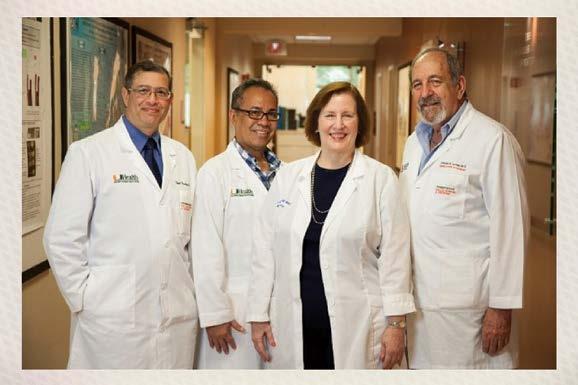
10 minute read
RESEARCH
Pioneering Fertility Researcher from The Miami Project to Cure Paralysis Retires
When most people think of paralysis, they think of not being able to move arms and legs, or not being able to breathe without the aid of a machine. It is commonly overlooked that many other organs and body systems are affected by the disruption of their nerve supply. One area that many do not discuss or consider is fertility, specifically male fertility and the ability of men living with spinal cord injury (SCI) to father children. Thanks to the foresight of The Miami Project’s late Scientific Director, Dr. Richard Bunge, and his encouragement of a young researcher named Nancy Brackett, Ph.D., SCI fertility research began entering a renaissance phase as it entered the consciousness of the scientific community.
To put this problem in better perspective, we must understand that most men, but typically not women, living with SCI, experience infertility because of disruptions to the nerves supplying their reproductive system. In men, these disruptions lead to impairments in erection, ejaculation, and semen quality. When Dr. Brackett started her research, little was known about the effects of SCI on semen quality because methods to retrieve semen from these men were relatively new. Consequently, little data were available. Dr. Brackett’s studies established an algorithm for semen retrieval in men with SCI, and this algorithm is still in use today as the best practice policy worldwide.
In the lab, Dr. Brackett’s team showed that men with SCI typically have normal sperm count, however sperm motility and sperm viability were abnormally low. When few motile sperm are available, medical intervention is often required to achieve pregnancy. This intervention can be costly and invasive. To remedy this problem, the cause of low sperm motility in men with SCI needed to be understood. Dr. Brackett’s research found that sperm motility could be improved if specific toxic substances in the seminal fluid were neutralized. This finding paved the way for a treatment to increase the number of motile sperm in the ejaculate, and thereby reduce the need for expensive medical interventions to achieve pregnancy. Ultimately, this research resulted in a greater number of men with SCI becoming biologic fathers, a dream that many had been told was impossible when they were first injured.
Dr. Brackett and her team are directly credited with helping SCI individuals bring more than 250 babies into the world. This staggering number does not consider the countless others who have taken advantage of the free online information to help guide their steps toward achieving biologic parenthood. Over the years, the fertility team has published hundreds of papers on the topic, sharing their wealth of knowledge with the scientific and SCI community. “When we began the research in the early 1990’s little was known about male infertility after SCI. Our 30 years of work answered a lot of questions. It made The Miami Project the go-to place for information on the topic. We did a lot to help men with SCI achieve fatherhood in a way that was optimal for each individual,” said Dr. Brackett.
Around the world, at the time and even today, not a lot of clinicians know how to treat these couples, so a big part of Dr. Brackett’s mission was to educate professional and lay communities. Some of the work was supported by the Craig Neilsen Foundation. Practitioners from all over the world visited The Miami Project to learn the techniques for treating this unique type of infertility. Through this important program, Dr. Brackett and her team of researchers were able to spread the word. More importantly, they felt it was imperative to “teach the teachers” with the goal of expanding knowledge and understanding about male fertility after SCI.
When asked what she felt her legacy in the field would be, she responded, “I wanted to help a patient population achieve a dream of biological children that may not have been possible otherwise, if not for this work. Initially, I was driven by curiosity. I wanted to understand what was causing this condition and what could improve it. When our scientific findings resulted in outcomes that actually made a difference in people’s lives – it was a dream come true for me, as for any researcher. It was always very satisfying to be able to help this special group of patients achieve such an important goal,” said Dr. Brackett.
In addition to their published works over the years, one everlasting tool the team produced will continue helping patients for years to come in achieving fatherhood.
Dr. Emad Ibrahim, Teodoro “Sonny” Aballa,, with Drs. Nancy Brackett and Charles Lynne Drs. Charles Lynne and Nancy Brackett hosting a 1995 reunion of families helped by the Miami Project’s Fertility Program The team produced and makes readily available, Male Fertility Following Spinal Cord Injury: A Guide for Patients. This guide was originally published in 2000 and has been updated many times since then. This booklet provides information about changes in male sexual function and fertility that may accompany SCI, and outlines the options available to deal with such changes. It is the hope of the fertility team that the information contained in the booklet can be used as a talking point for individuals and their medical professionals.


After more than three decades, Dr. Brackett and her team are considered the world leaders in the field. Now, most men with SCI can expect not only to father children, but to be provided with a treatment plan optimized for their needs. Since its inception, over 700 men have participated in The Miami Project Male Fertility Research Program. The work of this program, now under the direction of Emad Ibrahim, M.D., continues to improve the quality of life for countless men with SCI and their loved ones.
Dr. Brackett has had many colleagues throughout the years that helped make this work possible. Dr. Charles Lynne, Dr. Emad Ibrahim, Teodoro “Sonny” Aballa, the late Maria Amador, and numerous post-docs and residents. “I had a long and rewarding career at The Miami Project,” said Dr. Brackett who concluded, “I had the opportunity to study a fascinating medical problem and make a difference in people’s lives, all while working at a first rate university with talented colleagues. No one could be happier.”
NEED DETAILED CAPTION
The Miami Project Fertility team with the Lucchesi triplets in 1996
Dr. Vance Lemmon
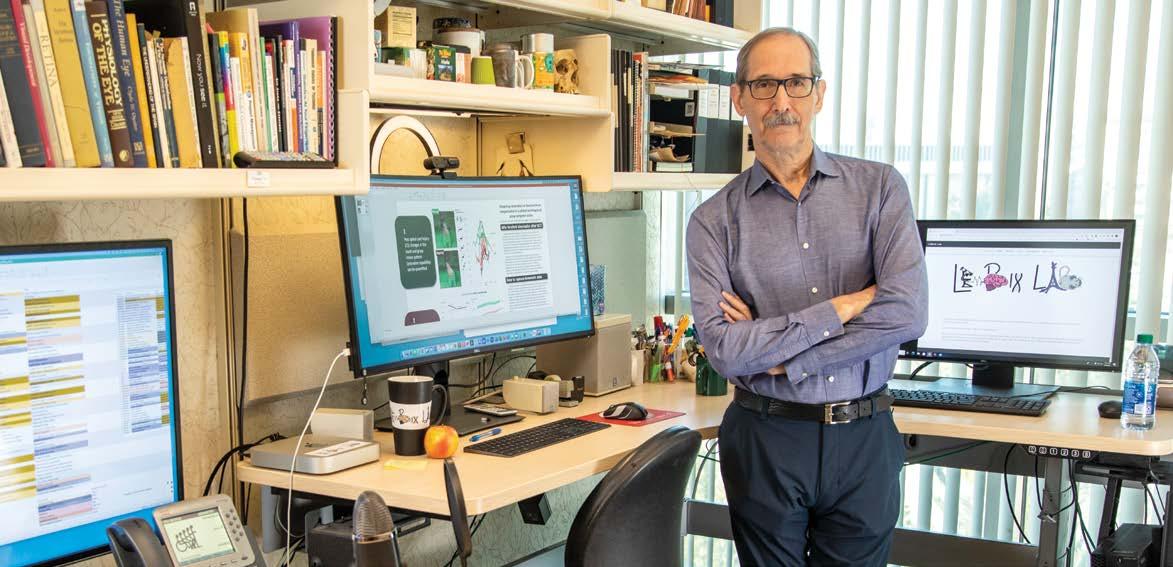
Vance Lemmon, Ph.D.
This year, once again, Dr. Vance Lemmon found himself in distinguished company at the 2021 International Neural Regeneration Symposium. For multiple years Dr. Lemmon has attended the conference, organized by the editorial board of the scientific journal Neural Regeneration Research, but this year’s virtual meeting was different. During his keynote speech, Dr. Lemmon was awarded the Lifetime Achievement Award in Neural Regeneration, an award with prior recipients including a Nobel Prize laureate and members of the world’s leading scientific societies.
Dr. Lemmon’s acceptance presentation, a keynote at the conference, mapped his body of work that earned him the prestigious award. In chronicling his career trajectory, Dr. Lemmon explicated his contributions to the development of high throughput phenotypic screening methods for the primary, signal-generating neurons of the central nervous system. These methods of deep characterization are foundational to understanding the adult mammalian central nervous system’s general inability to actualize self-repair, thereby identifying candidate targets that might inspire growth in these otherwise stubborn cells. His story begins with his postdoctoral and early (Assistant) professor work where he developed and produced key antibodies that allowed for the study of the role of adhesion molecules in axonal outgrowth, gaining him wide acceptance in the regeneration field. Following this foundational work, Dr. Lemmon made a move to Case Western Reserve University where he would continue to make his “unintended” transformation from electrophysiologist to cellular and molecular neuroscientist. During this transformation, Dr. Lemmon would
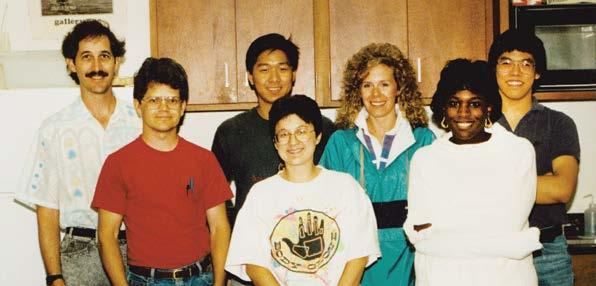
Lemmon lab at CWRU in 1991. Team members studied how cell adhesion molecules regulated axon growth and cloned the gene for human L1cam. This led to the discovery that mutations in L1cam cause a terrible birth defect affecting the brain. University of Miami Team that visited China in 2017 to provide advice about SCI clinical trials. S. Züchner, V. Lemmon, R. Cowan, M. Perez, Y. Shi., A. Lalwani.
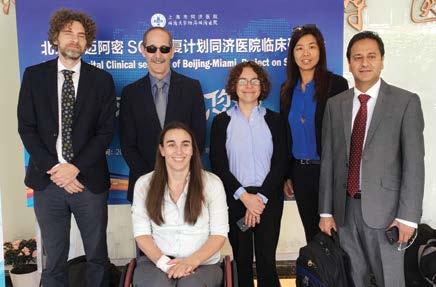
“We congratulate Dr. Vance Lemmon on receiving this welldeserved Lifetime Achievement Award for his influential work on the development and testing of new strategies for enhancing axonal regeneration and spinal cord repair.” Dr. Dalton Dietrich, Scientific Director, The Miami Project to Cure Paralysis
also work with several Japanese scientists, at the time postdoctoral fellows, establishing his professional link to Asia. Then, in 2003, he made his final fateful move to The Miami Project to Cure Paralysis at the University of Miami where he would manifest the intriguing (“crazy”, in his words) merger of his laboratory with that of Dr. John Bixby to create the LemBix lab. Together, and in collaboration with so many others, the LemBix lab has now screened over 440 million compounds and genetic molecules on primary neurons.
Dr. Lemmon’s body of work will forever solidify his name in history, making his international recognition self-evident. But the connection to China is less obvious. The Chinese contribution to modern axonal regeneration dates back to at least Kwok-Fai So’s fellowship with Albert Aguayo that yielded the “Lengthy regrowth of cut axons…” paper that helped fuel the modern resurgence of spinal cord repair efforts. However, recently there has been a recent uptick in the Chinese emphasis on rehabilitation medicine, and a commensurate increase in the number of clinical trials testing regenerative strategies in persons with spinal cord injury. This emphasis on SCI coincides with Premier Li Keqiang’s assumption of office in 2013, and is in accord with the increased prevalence of neurotrauma in China due to occupational hazards as well as the capacity for human trials afforded by China’s population size. In fact, 2013 just so happens to be the first year that Dr. Lemmon participated in the International Neural Regeneration Symposium, a meeting that led to further collaboration, including a 2017 biomaterial validation study that involved multiple multi-week visits to China and a formal institutional data sharing and oversight policy that boosted the rigor of the study analysis. Dr. Lemmon then helped organize a series of workshops for the 2018 Neural Regeneration Symposium, with a crowd favorite practicum on machine learning techniques for biologists. Dr. Lemmon was back by popular demand at the most recent Symposium with a continuation of this machine learning seminar, now virtual, that attracted over 7,000 participants. Surely it is Dr. Lemmon’s educational and advisory contributions to the Chinese space of neural regeneration that—along with his body of scientific work—merited his Lifetime Achievement Award. It is a prodigious depth and breadth of academic contribution such as this, across disciplines, generations, and borders, that frame the shoulders of giants upon which others now, and in the future stand to continue our communal advance.
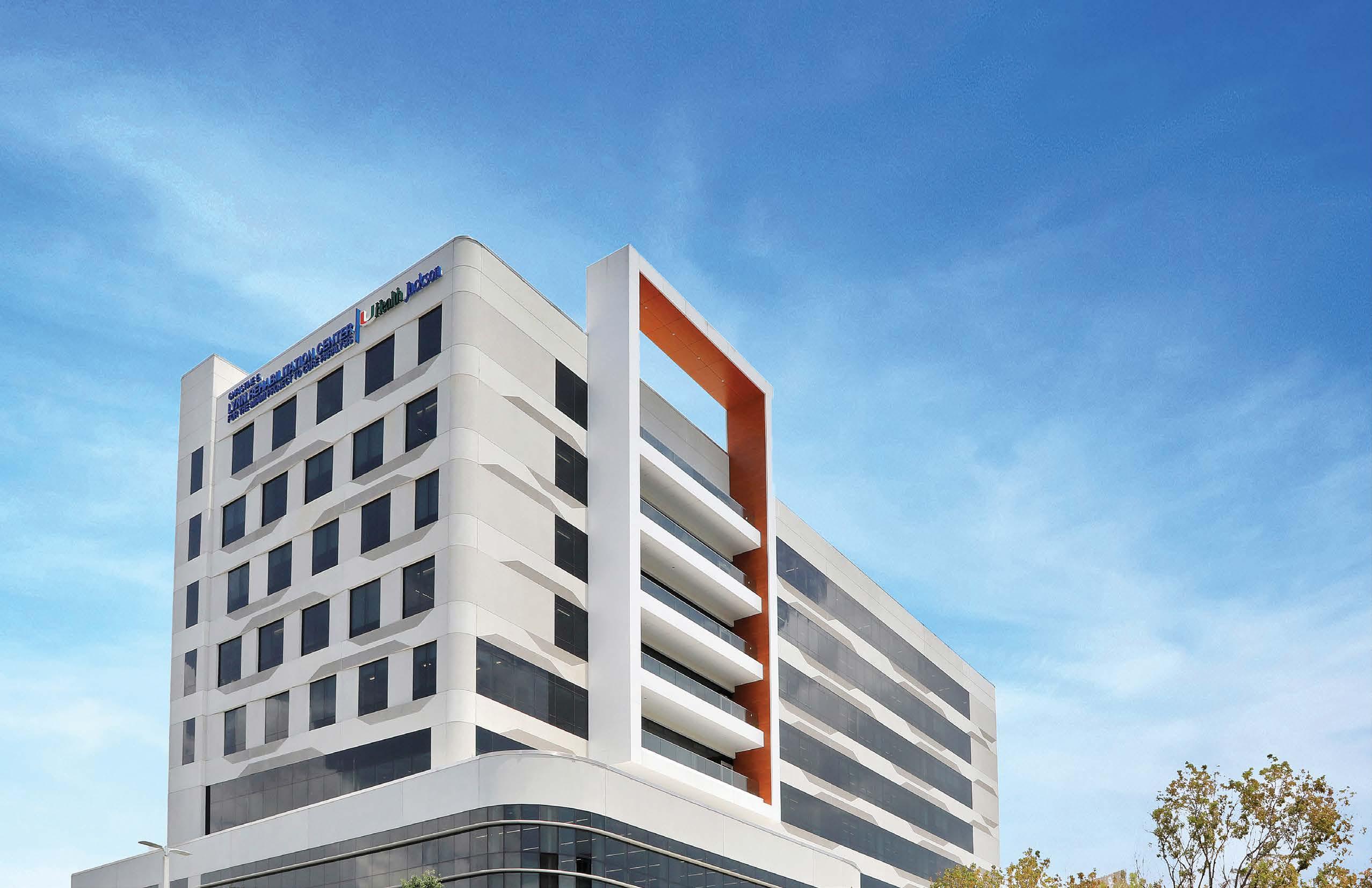
The Miami Project to Cure Paralysis, a Center of Excellence at the University of Miami Leonard M. Miller School of Medicine, is a generative collective of researchers utilizing all available tools of basic and clinical science to unlock the consequences of spinal cord injury. This collective’s operations now span two buildings, the newest being The Christine E. Lynn Rehabilitation Center for The Miami Project to Cure Paralysis at UHealth/Jackson Memorial. Located at 1611 NW 12th Ave in Miami, the facility is now open and is home to The Miami Project’s clinical researchers alongside many other entities who serve the mission of understanding, managing, and eventually curing paralysis.
At its inception The Miami Project was an idea that preceded brick and mortar, and the Lois Pope LIFE Center, the research building which opened in 2000 and houses the basic science team, grounded the vision. Now another world-class, purpose-built facility is erected to animate an idea. The Christine E. Lynn Rehabilitation Center for The Miami Project to Cure Paralysis at UHealth/Jackson Memorial, is a comprehensive medical facility that brings together all domains of rehabilitation medicine and research across the full continuum of care, from inpatient to outpatient to community reentry, under one roof. This paradigm lends itself to treating many complex conditions, from neurotrauma such as spinal cord injury and brain injury to cancer, but the building was explicitly designed to enable “cutting-edge clinical research under the unmatched development expertise” of The Miami Project to Cure Paralysis.



